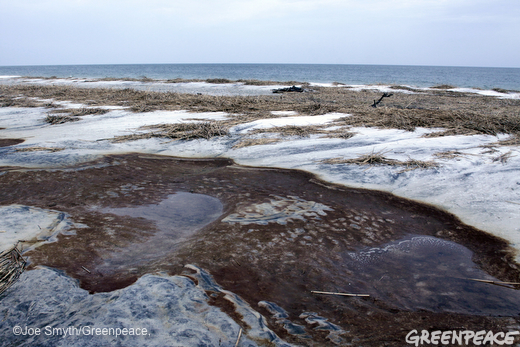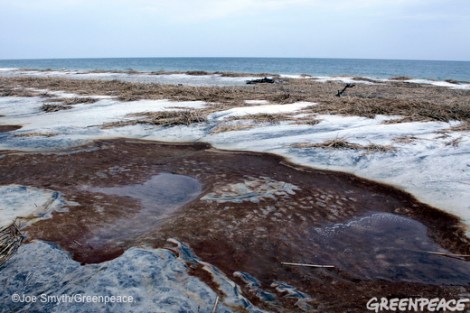
Oil is washing up along the Gulf Coast in Alabama, Mississippi, and Louisiana, churned up by Hurricane Isaac. After discovering hundreds of tar balls at Bon Secour National Wildlife Refuge in Alabama, a Greenpeace research team joined our allies at the Gulf Restoration Network to investigate the impacts on East and West Ship Island, off the coast of Mississippi. We found tar balls on East Ship Island and several heavily oiled areas on West Ship Island, which are both part of the Gulf National Seashore.
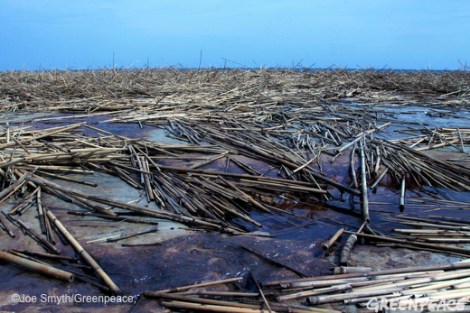
Oil and reeds washed up by Hurricane Isaac on West Ship Island, Miss., Sept. 4, 2012.
Meanwhile, the New Orleans Times-Picayune reports that Louisiana is “closing a 12-mile section of Gulf coastline from Caminada Pass to Pass Fourchon after Hurricane Isaac washed up large areas of oil and tar balls at the location of one of the worst inundations of BP oil during the Deepwater Horizon disaster of 2010 … agency crews surveying damage from Isaac discovered large sections of viscous oil and tar balls floating along the coast.”
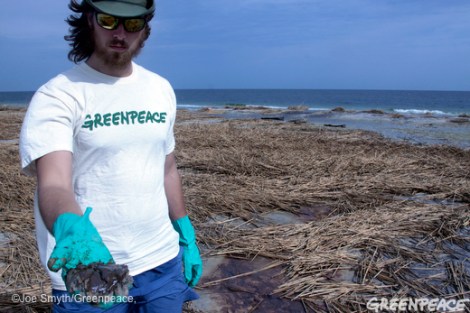
Greenpeace researcher Jesse Coleman takes samples of oil washed up by Hurricane Isaac on West Ship Island.
Greenpeace documented oil on East Ship Island in October 2010, months after the BP oil disaster. Returning two years later to find so much oil pollution is a sad reminder that it’s impossible to clean up a major marine oil spill. Officials are concerned that up to 1 million barrels of oil are estimated to remain in the Gulf of Mexico, and are calling on the Environmental Protection Agency and the National Oceanic and Atmospheric Administration to explain how they will address oil pollution remaining from the 2010 spill.
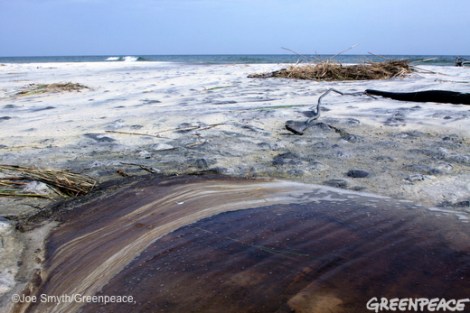
Oil washed up by Hurricane Isaac contaminates water on West Ship Island.
It’s clear that the impacts will be felt for years on the Gulf Coast, and the risk of such a disaster exists wherever our coasts are open to offshore oil drilling.

